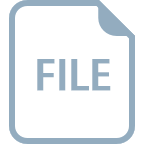Unet分割的代码不含有数据集 2.66MB
资源文件列表:
 unet-master - 副本/.idea/
unet-master - 副本/.idea/ unet-master - 副本/.idea/.gitignore 176B
unet-master - 副本/.idea/.gitignore 176B  unet-master - 副本/.idea/inspectionProfiles/
unet-master - 副本/.idea/inspectionProfiles/ unet-master - 副本/.idea/inspectionProfiles/profiles_settings.xml 174B
unet-master - 副本/.idea/inspectionProfiles/profiles_settings.xml 174B  unet-master - 副本/.idea/inspectionProfiles/Project_Default.xml 510B
unet-master - 副本/.idea/inspectionProfiles/Project_Default.xml 510B  unet-master - 副本/.idea/misc.xml 272B
unet-master - 副本/.idea/misc.xml 272B  unet-master - 副本/.idea/modules.xml 274B
unet-master - 副本/.idea/modules.xml 274B  unet-master - 副本/.idea/unet_42-new.iml 472B
unet-master - 副本/.idea/unet_42-new.iml 472B  unet-master - 副本/.idea/workspace.xml 7.83KB
unet-master - 副本/.idea/workspace.xml 7.83KB  unet-master - 副本/__pycache__/
unet-master - 副本/__pycache__/ unet-master - 副本/bmp转jpg.py 1KB
unet-master - 副本/bmp转jpg.py 1KB  unet-master - 副本/bmp转png.py 1001B
unet-master - 副本/bmp转png.py 1001B  unet-master - 副本/data/
unet-master - 副本/data/ unet-master - 副本/data/results/
unet-master - 副本/data/results/ unet-master - 副本/data/Test_Images/
unet-master - 副本/data/Test_Images/ unet-master - 副本/data/Test_Labels/
unet-master - 副本/data/Test_Labels/ unet-master - 副本/data/Training_Images/
unet-master - 副本/data/Training_Images/ unet-master - 副本/data/Training_Labels/
unet-master - 副本/data/Training_Labels/ unet-master - 副本/images/
unet-master - 副本/images/ unet-master - 副本/images/111/
unet-master - 副本/images/111/ unet-master - 副本/images/111/ISIC_0000000.jpg 48.79KB
unet-master - 副本/images/111/ISIC_0000000.jpg 48.79KB  unet-master - 副本/images/111/ISIC_0000000_res.png 4.76KB
unet-master - 副本/images/111/ISIC_0000000_res.png 4.76KB  unet-master - 副本/images/ISIC_0000000.jpg 48.79KB
unet-master - 副本/images/ISIC_0000000.jpg 48.79KB  unet-master - 副本/images/ISIC_0000000_res.png 4.72KB
unet-master - 副本/images/ISIC_0000000_res.png 4.72KB  unet-master - 副本/images/right.jpeg 26.57KB
unet-master - 副本/images/right.jpeg 26.57KB  unet-master - 副本/images/tmp/
unet-master - 副本/images/tmp/ unet-master - 副本/images/tmp/tmp_upload.jpeg 21.27KB
unet-master - 副本/images/tmp/tmp_upload.jpeg 21.27KB  unet-master - 副本/images/UI/
unet-master - 副本/images/UI/ unet-master - 副本/images/UI/logo.jpeg 33.37KB
unet-master - 副本/images/UI/logo.jpeg 33.37KB  unet-master - 副本/images/UI/lufei.png 215.7KB
unet-master - 副本/images/UI/lufei.png 215.7KB  unet-master - 副本/images/UI/right.jpeg 25.45KB
unet-master - 副本/images/UI/right.jpeg 25.45KB  unet-master - 副本/images/UI/up.jpeg 27.88KB
unet-master - 副本/images/UI/up.jpeg 27.88KB  unet-master - 副本/images/up.jpeg 21.27KB
unet-master - 副本/images/up.jpeg 21.27KB  unet-master - 副本/labelme2seg.py 1.02KB
unet-master - 副本/labelme2seg.py 1.02KB  unet-master - 副本/model/
unet-master - 副本/model/ unet-master - 副本/model/__init__.py
unet-master - 副本/model/__init__.py unet-master - 副本/model/__pycache__/
unet-master - 副本/model/__pycache__/ unet-master - 副本/model/__pycache__/__init__.cpython-37.pyc 141B
unet-master - 副本/model/__pycache__/__init__.cpython-37.pyc 141B  unet-master - 副本/model/__pycache__/__init__.cpython-38.pyc 161B
unet-master - 副本/model/__pycache__/__init__.cpython-38.pyc 161B  unet-master - 副本/model/__pycache__/unet_model.cpython-37.pyc 1.34KB
unet-master - 副本/model/__pycache__/unet_model.cpython-37.pyc 1.34KB  unet-master - 副本/model/__pycache__/unet_model.cpython-38.pyc 1.37KB
unet-master - 副本/model/__pycache__/unet_model.cpython-38.pyc 1.37KB  unet-master - 副本/model/__pycache__/unet_parts.cpython-37.pyc 2.79KB
unet-master - 副本/model/__pycache__/unet_parts.cpython-37.pyc 2.79KB  unet-master - 副本/model/__pycache__/unet_parts.cpython-38.pyc 2.75KB
unet-master - 副本/model/__pycache__/unet_parts.cpython-38.pyc 2.75KB  unet-master - 副本/model/unet_model.py 1.29KB
unet-master - 副本/model/unet_model.py 1.29KB  unet-master - 副本/model/unet_parts.py 3.39KB
unet-master - 副本/model/unet_parts.py 3.39KB  unet-master - 副本/predict.py 1.72KB
unet-master - 副本/predict.py 1.72KB  unet-master - 副本/requirements.txt 143B
unet-master - 副本/requirements.txt 143B  unet-master - 副本/results/
unet-master - 副本/results/ unet-master - 副本/results/confusion_matrix.csv 68B
unet-master - 副本/results/confusion_matrix.csv 68B  unet-master - 副本/results/mIoU.png 15.56KB
unet-master - 副本/results/mIoU.png 15.56KB  unet-master - 副本/results/mPA.png 14.85KB
unet-master - 副本/results/mPA.png 14.85KB  unet-master - 副本/results/Precision.png 14.7KB
unet-master - 副本/results/Precision.png 14.7KB  unet-master - 副本/results/Recall.png 14.06KB
unet-master - 副本/results/Recall.png 14.06KB  unet-master - 副本/test.py 4.17KB
unet-master - 副本/test.py 4.17KB  unet-master - 副本/testdata/
unet-master - 副本/testdata/ unet-master - 副本/testdata/jsons/
unet-master - 副本/testdata/jsons/ unet-master - 副本/testdata/jsons/Case-1-U-1-1.json 65.34KB
unet-master - 副本/testdata/jsons/Case-1-U-1-1.json 65.34KB  unet-master - 副本/testdata/jsons/Case-2-U-2-2.json 77.86KB
unet-master - 副本/testdata/jsons/Case-2-U-2-2.json 77.86KB  unet-master - 副本/testdata/jsons/Case-2-U-2-3.json 89.63KB
unet-master - 副本/testdata/jsons/Case-2-U-2-3.json 89.63KB  unet-master - 副本/testdata/jsons/Case-3-U-5-0.json 83.71KB
unet-master - 副本/testdata/jsons/Case-3-U-5-0.json 83.71KB  unet-master - 副本/testdata/jsons/Case-3-U-5-2.json 83.12KB
unet-master - 副本/testdata/jsons/Case-3-U-5-2.json 83.12KB  unet-master - 副本/testdata/jsons/Case-3-U-5-3.json 80.91KB
unet-master - 副本/testdata/jsons/Case-3-U-5-3.json 80.91KB  unet-master - 副本/testdata/jsons/Case-4-U-8-0.json 84.39KB
unet-master - 副本/testdata/jsons/Case-4-U-8-0.json 84.39KB  unet-master - 副本/testdata/jsons/Case-4-U-8-1.json 85.46KB
unet-master - 副本/testdata/jsons/Case-4-U-8-1.json 85.46KB  unet-master - 副本/testdata/jsons/Case-5-U-10-0.json 78.91KB
unet-master - 副本/testdata/jsons/Case-5-U-10-0.json 78.91KB  unet-master - 副本/testdata/jsons/Case-5-U-10-1.json 82.62KB
unet-master - 副本/testdata/jsons/Case-5-U-10-1.json 82.62KB  unet-master - 副本/testdata/labels/
unet-master - 副本/testdata/labels/ unet-master - 副本/testdata/labels/Case-1-U-1-1.png 3.18KB
unet-master - 副本/testdata/labels/Case-1-U-1-1.png 3.18KB  unet-master - 副本/testdata/labels/Case-2-U-2-2.png 2.82KB
unet-master - 副本/testdata/labels/Case-2-U-2-2.png 2.82KB  unet-master - 副本/testdata/labels/Case-2-U-2-3.png 3.25KB
unet-master - 副本/testdata/labels/Case-2-U-2-3.png 3.25KB  unet-master - 副本/testdata/labels/Case-3-U-5-0.png 3.55KB
unet-master - 副本/testdata/labels/Case-3-U-5-0.png 3.55KB  unet-master - 副本/testdata/labels/Case-3-U-5-2.png 3.59KB
unet-master - 副本/testdata/labels/Case-3-U-5-2.png 3.59KB  unet-master - 副本/testdata/labels/Case-3-U-5-3.png 3.24KB
unet-master - 副本/testdata/labels/Case-3-U-5-3.png 3.24KB  unet-master - 副本/testdata/labels/Case-4-U-8-0.png 3.02KB
unet-master - 副本/testdata/labels/Case-4-U-8-0.png 3.02KB  unet-master - 副本/testdata/labels/Case-4-U-8-1.png 2.44KB
unet-master - 副本/testdata/labels/Case-4-U-8-1.png 2.44KB  unet-master - 副本/testdata/labels/Case-5-U-10-0.png 3.47KB
unet-master - 副本/testdata/labels/Case-5-U-10-0.png 3.47KB  unet-master - 副本/testdata/labels/Case-5-U-10-1.png 3.46KB
unet-master - 副本/testdata/labels/Case-5-U-10-1.png 3.46KB  unet-master - 副本/train.py 2.46KB
unet-master - 副本/train.py 2.46KB  unet-master - 副本/ui.py 8.04KB
unet-master - 副本/ui.py 8.04KB  unet-master - 副本/unet原文.pdf 1.57MB
unet-master - 副本/unet原文.pdf 1.57MB  unet-master - 副本/utils/
unet-master - 副本/utils/ unet-master - 副本/utils/__pycache__/
unet-master - 副本/utils/__pycache__/ unet-master - 副本/utils/__pycache__/dataset.cpython-37.pyc 1.81KB
unet-master - 副本/utils/__pycache__/dataset.cpython-37.pyc 1.81KB  unet-master - 副本/utils/__pycache__/dataset.cpython-38.pyc 1.84KB
unet-master - 副本/utils/__pycache__/dataset.cpython-38.pyc 1.84KB  unet-master - 副本/utils/__pycache__/utils_metrics.cpython-37.pyc 6.01KB
unet-master - 副本/utils/__pycache__/utils_metrics.cpython-37.pyc 6.01KB  unet-master - 副本/utils/__pycache__/utils_metrics.cpython-38.pyc 6.35KB
unet-master - 副本/utils/__pycache__/utils_metrics.cpython-38.pyc 6.35KB  unet-master - 副本/utils/data_remove_seg.py 730B
unet-master - 副本/utils/data_remove_seg.py 730B  unet-master - 副本/utils/dataset.py 2.81KB
unet-master - 副本/utils/dataset.py 2.81KB  unet-master - 副本/utils/gen_split.py 1.57KB
unet-master - 副本/utils/gen_split.py 1.57KB  unet-master - 副本/utils/label2png.py 1.41KB
unet-master - 副本/utils/label2png.py 1.41KB  unet-master - 副本/utils/utils_metrics.py 9.26KB
unet-master - 副本/utils/utils_metrics.py 9.26KB  unet-master - 副本/切换镜像.txt 348B
unet-master - 副本/切换镜像.txt 348B